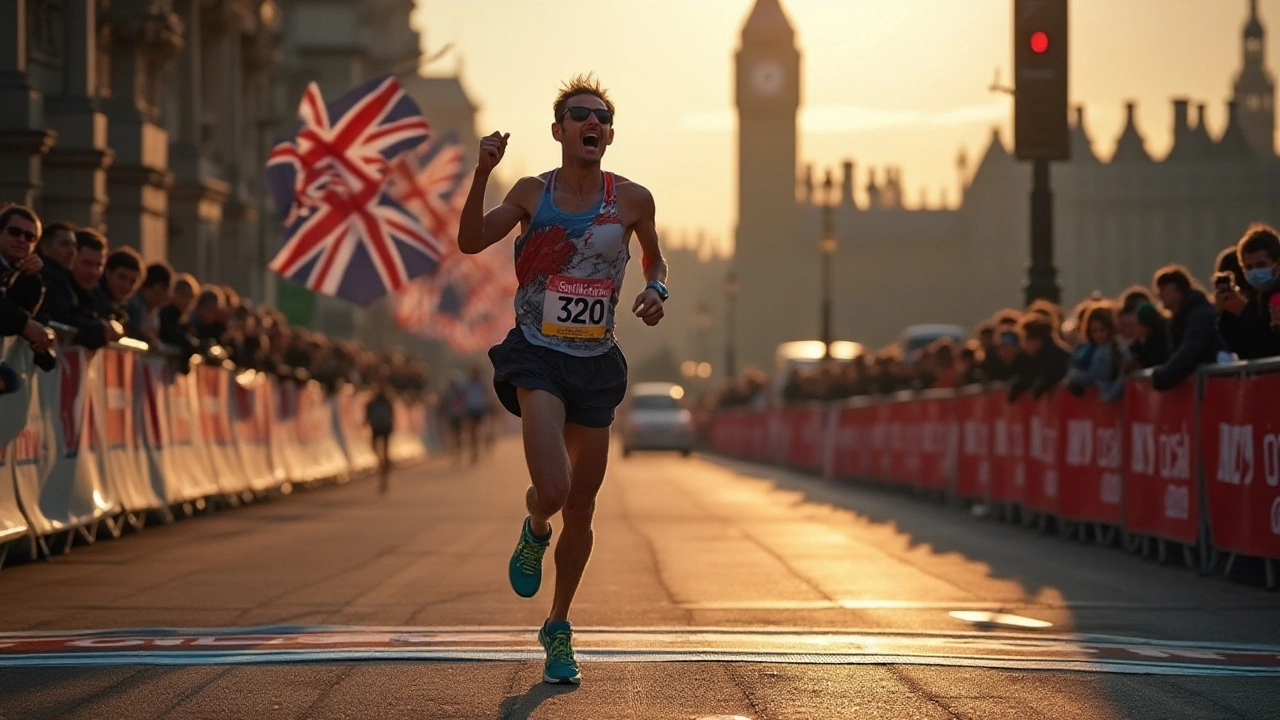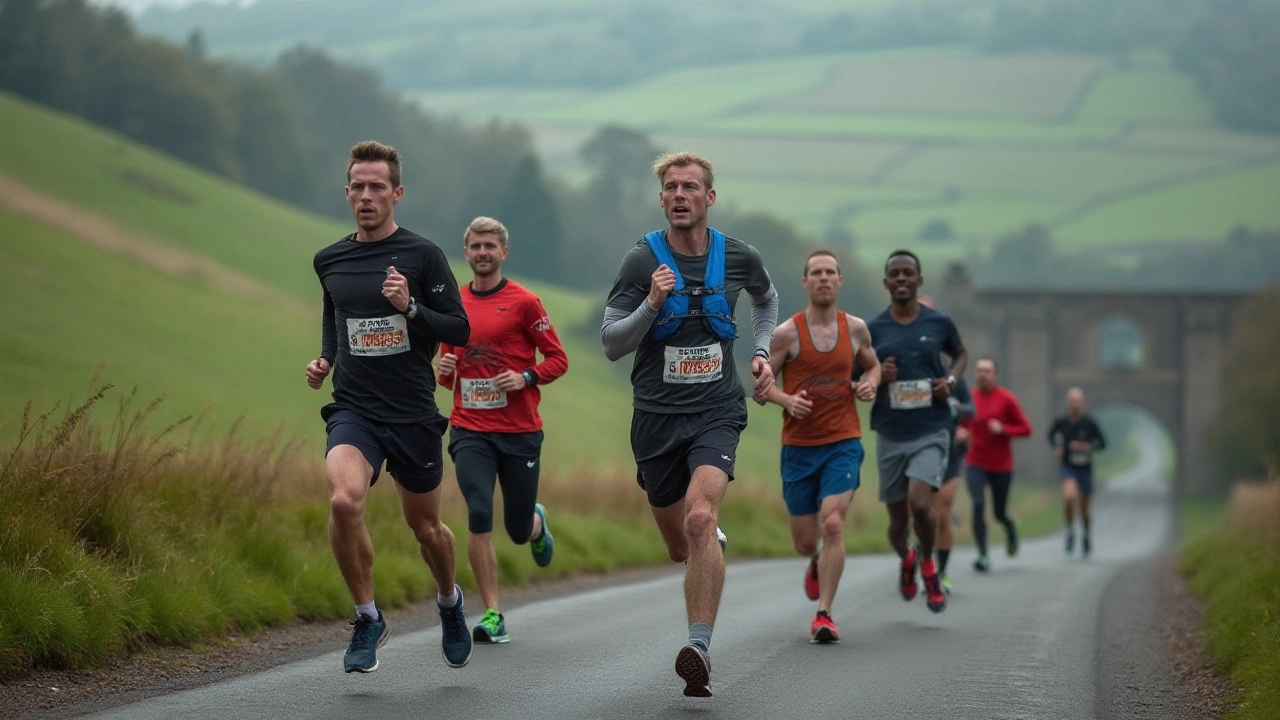Understanding Marathon Times: Is 3:20 A Good Time?

Running a marathon is a journey that challenges both the body and mind. Crossing the finish line with a time of 3 hours and 20 minutes is a notable accomplishment that many runners aspire to achieve. But what does this time really signify, and how attainable is it for the average runner?
In this article, we'll break down the elements that contribute to reaching a 3:20 marathon time, from effective training routines to essential lifestyle adjustments. Whether you're at the beginning of your marathon journey or looking to improve your personal best, understanding the path to 3:20 can provide invaluable insights. So lace up your running shoes and get ready to explore what it takes to hit the 3:20 mark.
- The Significance of a 3:20 Marathon
- Factors Influencing Marathon Times
- Training Strategies for a 3:20 Goal
- Nutrition and Recovery
- Mental Toughness and Its Impact
- Inspirational Journeys to 3:20
The Significance of a 3:20 Marathon
For many runners, achieving a marathon time of 3 hours and 20 minutes represents more than just a physical accomplishment; it is a testament to dedication, resilience, and the culmination of countless hours spent honing one’s craft. To put this time into perspective, a 3:20 marathon time translates to running each mile in approximately 7 minutes and 38 seconds, an impressive pace maintained over the grueling 26.2-mile distance. This feat places runners in the upper tier of marathon participants, often qualifying them for prestigious events like the Boston Marathon, depending on their age and gender group.
The allure of a 3:20 marathon time stems from its dual nature as a feasible goal for amateur enthusiasts and a challenging milestone for seasoned competitors. To many, it symbolizes breaking through a significant barrier, akin to crossing the threshold between an intermediate and advanced level of running proficiency. This time is also often associated with a balanced lifestyle, where one has successfully integrated consistent running, nutrition, and mental discipline into daily routines. Achieving this time can significantly boost a runner’s self-esteem, serving as both a personal victory and an emblem of athletic excellence.
However, reaching a marathon time of 3:20 requires an understanding of several key factors that influence performance. Commitment is paramount, as is the implementation of a structured training plan that incrementally builds endurance and speed. Recovery, too, plays a crucial role, as does ensuring proper nutrition and hydration. Runners often need to navigate hurdles such as injuries, fatigue, and unpredictable race day conditions, honing their mental resilience as they push towards this coveted goal.
"The marathon can humble you," notes celebrated running coach Greg McMillan, "It teaches you about who you are and what you are capable of when you extend yourself beyond what you thought was possible." This insight captures the essence of why a 3:20 marathon is both an achievement and a journey, offering invaluable lessons about perseverance and fighting through limitations.
For those eyeing such a target, understanding the journey of other runners who have hit the 3:20 mark can offer inspiration and practical tips. From adopting incremental mileage increases to incorporating interval training and tempo runs, the strategies are as varied as the runners themselves. These training adaptations can pave the way toward achieving the running goal, framed by the unique narrative of each runner’s dedication and spirit.
Factors Influencing Marathon Times
Running a marathon is more than just a test of speed over 26.2 miles; it is an intricate dance of various elements working together to create a perfect symphony of endurance and pace. One of the most critical aspects affecting one's marathon time is the runner's physical condition and their ability to sustain a certain pace over long distances. This largely hinges on the aerobic base developed through long, steady runs. A robust aerobic system allows runners to utilize oxygen more efficiently, ultimately affecting their ability to maintain a target pace such as 3 hours 20 minutes.
Another vital factor is the runner’s experience level. Beginner runners may find it challenging to pace themselves properly without the requisite experience under their belts, prompting exhaustion or hitting the infamous wall too early in the race. Seasoned marathoners, on the other hand, often draw on their past experiences to gauge how their body responds at different paces and distances. This experiential knowledge plays a key role in building strategy and confidence, elements that can shave crucial minutes off a runner's time.
Let's not overlook the role of nutrition in influencing marathon pace. Fuelling strategies employed both during training and on race day are pivotal to optimal performance. Runners need to be mindful of their glycogen stores and how to replenish them efficiently to keep energy levels stable. The importance of hydration cannot be overstated as well. Dehydration can lead to significant decreases in performance, negatively impacting one's race time. As renowned dietitian Nancy Clark, MS RD, highlights, "The foods runners eat on a regular basis have a significant impact on their training quality and race performance."
It's important to eat wisely and adequately if you’re targeting a personal best.
Environmental conditions also wield a significant influence on marathon times. Weather elements such as temperature, humidity, and wind can either make or break a race. Ideal conditions are typically cool and dry, allowing the body to manage its temperature efficiently. In contrast, extreme heat or humidity can lead to faster dehydration and an increased heart rate, making it difficult to sustain a running goal of 3:20. Some runners even adapt their training to simulate potential race conditions—a smart move that prepares both body and mind to tackle whatever nature throws on race day.
The terrain of the marathon course is also a significant element. Runners tend to perform better on flat courses as opposed to hilly routes, which require more energy for elevation changes. Even psychological factors must be acknowledged: mental toughness is an attribute shared by many successful marathoners. The ability to push past discomfort and maintain focus throughout the race has a profound impact on a runner's ability to reach ambitious times. Emphasizing mental strategies to counter fatigue and doubt can indeed add the edge needed to chase a 3:20 finish.
Stats That Speak Volumes
To put things into perspective, let's consider some statistics. According to Running USA, the average marathon finishing time over the years has hovered around 4 hours 30 minutes. Achieving a sub-3:30 time places a runner in the top 20% of all participants, which showcases the significant commitment and performance of those targeting a 3:20 finish. Understanding these various factors highlights the intricate complexity of marathon training and sets a clear path for aspiring marathoners aiming for this remarkable achievement.

Training Strategies for a 3:20 Goal
Setting your sights on a marathon time of 3 hours and 20 minutes requires a well-structured and disciplined training plan. To begin with, it's essential to establish a base level of fitness. Starting months in advance, many runners focus on building their weekly mileage. Aiming for at least 40 to 50 miles per week, with a handful of runs exceeding 15 miles, sets a solid foundation for endurance. Integrate various types of runs such as speed workouts, tempo runs, and long-distance jogs to create a versatile routine. Consistency is key, and ensuring each session addresses different aspects of your fitness can make a huge difference in your performance come race day.
One of the most significant components of achieving a 3:20 marathon is honing your pace strategy. Not only does this involve understanding how fast you need to run (around a 7:38 minute per mile pace), but it also means becoming comfortable with sustaining it over the marathon distance. Tempo runs should become a staple in your training, as they allow you to practice running at pace under varying conditions. Equally important is the incorporation of interval training. These shorter, faster runs are vital in increasing your overall speed and agility, making the marathon goal more attainable.
Diet and nutrition also play a crucial role. Emphasize a balanced intake of carbohydrates, proteins, and fats to fuel your body efficiently. Many marathoners adopt a carb-loading strategy in the days leading up to the race, ensuring their energy stores are maximized. Hydration can never be understated, as maintaining optimal fluid levels ensures that you reduce the risk of dehydration, which can severely impact performance. Being mindful of these aspects during your training keeps you in peak condition as race day approaches.
Mental strength is what often distinguishes good runners from great ones. Alongside the physical preparation, cultivating a strong mindset can drive you through inevitable tough patches in the latter stages of the race. Visualization exercises, where you mentally rehearse your race plan, encourage resilience. Developing mental cues or affirmations that you can rely on during the marathon can fortify your determination when fatigue starts to set in. Consider joining running groups or finding a training partner—social support and shared experiences can be hugely empowering from both a physical and a psychological standpoint.
A study from the Journal of Applied Sports Psychology states, "Athletes who incorporate mental practices alongside their physical regimen experience marked improvements in performance outcomes."
Combining these techniques can elevate your running game, allowing you to push past barriers you once thought insurmountable.
Putting all these elements into practice provides you with a comprehensive framework to pursue the 3:20 running goal. It's not simply about physical advantages—it's about balance, strategy, and persistence that culminate in success. Remember, every runner's journey is unique, and while some may reach their desired results quickly, for others, it's the consistency and dedication that ultimately prevail.
Nutrition and Recovery
Nourishing your body correctly and allowing it ample time to recover are indispensable parts of pursuing a marathon time of 3:20. Runners often underestimate the power of a well-balanced diet and adequate rest, both of which can dramatically affect performance. Fueling your body with the right nutrients helps it endure long training sessions and improves recovery times. Incorporating complex carbohydrates like whole grains, quinoa, and sweet potatoes provides the energy needed to sustain prolonged activity. Proteins are equally vital, as they aid in repairing muscle tissue damaged during training. Lean meats, beans, and tofu are excellent choices. Hydration should never be overlooked, as dehydration can compromise performance and recovery. Drinking water and electrolyte-rich drinks is key.
Recovery, on the other hand, is as much about rest as it is about what you eat. Our muscles and connective tissues need time to repair and strengthen after the strain of long runs. This means planning rest days into your training schedule and ensuring you get sufficient sleep each night. Many marathoners use techniques like foam rolling and massage to enhance circulation and promote quicker recovery. Additionally, some runners have found success with cold water immersion to reduce inflammation after particularly grueling sessions. Incorporating these recovery strategies into your regimen can make a significant difference in muscle resilience. According to esteemed marathon coach Liz Farmer,
"Recovery is where the gains actually happen. The runs tear you down, but it's the recovery that builds you up to next-level performances."
For those gunning for that marathon time of 3 hours and 20 minutes, considering nutritional supplements can also be advantageous. Many runners choose to integrate omega-3 fatty acids, B-vitamins, and magnesium into their diets, recognizing their role in reducing inflammation and boosting energy metabolism. It is, however, crucial to consult with a nutritionist or doctor before embarking on any supplement regimen. Although dietary needs can vary greatly from one runner to another, understanding the essential nutrients that fuel performance and speed recovery will put you on the right path to achieving your goal.

Mental Toughness and Its Impact
Mental toughness is often hailed as the silent partner to physical training when it comes to running a marathon, particularly when aiming for a competitive marathon time like 3:20. It's an aspect that can make or break the race, influencing not only the ability to maintain the desired pace but also to overcome inevitable hurdles. Marathons are as mentally taxing as they are physical, challenging runners to push beyond pain, fatigue, and the deceptive lull of settling into a less challenging pace. Developing mental resilience is key; it involves cultivating positive self-talk, setting mental checkpoints, and maintaining focus on the end goal. Running through discomfort trains the mind to recognize temporary pain points as stepping stones rather than insurmountable walls. Runners can benefit greatly from visualizing crossing that finish line with their sought-after time on the clock.
Research by sport psychologists has demonstrated that mental toughness can essentially make up for perceived deficits in talent or physical conditioning. Consider the impact of self-belief: believing that a marathon pace of 3:20 is not just possible but probable can significantly alter the outcome of the race. When doubts creep in, an athlete’s inner dialogue should counterbalance with affirmations and reminders of previous training milestones. Incorporating mindfulness and meditation into daily routines also sharpens focus. Nancy Clark, a renowned sports nutritionist and author, once remarked, "Your body achieves what your mind believes." This perspective underscores the importance not just of physical fuel but mental fortitude as crucial ingredients in the marathon mix.
Creating strategies to manage mental challenges is beneficial for marathoners aiming for high performance. Deliberate practice in controlled environments, where friends or training partners simulate race-like conditions, can build endurance against mental fatigue. It's advisable to subdivide the marathon into smaller, manageable segments, reframing the race into a series of challenges rather than a singular daunting experience. Setting mini-goals throughout – for instance, maintaining a specific pace using intervals – enables the mind to stay fresh and responsive. Mental toughness also ties into strategic pacing decisions and adaptability on race day, allowing runners to adjust their strategies based on real-time conditions and personal energy reserves without losing momentum.
Interestingly, anecdotal evidence from seasoned marathoners reflects the critical role of mental preparedness. They often recount moments where finishing strong hinged on mental, rather than physical capabilities. Physical readiness lays the groundwork, but it's often mental resilience that propels runners to hit their ambitious targets like a 3:20 running goal. Understanding this balance can transform daunting scenarios into positive and fuelled experiences. As we move through the training and into marathon day, let's keep front of mind a saying from the ultra-running community: "Endurance is the ability to keep going when everything else demands that you stop." It's a reminder that mental strength is not only part of the equation but perhaps its driving force.
Inspirational Journeys to 3:20
The path to a 3:20 marathon is often paved with inspiring stories of determination and passion. Among them, tales from average runners who have transformed their lives to conquer this challenge stand out. Consider Sarah, a school teacher who began her running journey on the treadmill, at a leisurely pace. Initially, her goal was not more than shedding a few pounds, but soon she was captivated by the rhythm of running and the goal of achieving better marathon times.
Sarah started with a half-marathon, her time just shy of two hours. Not satisfied, she aspired to complete a full marathon, setting her sights on the coveted 3:20 mark. Training was rigorous, involving early morning runs before school and weekend long-distance trips. Motivation came from friends, family, and a supportive online community. "Every run felt like a portal to another world," she once shared on her blog.
"The hurdles were immense, but each step forward brought me closer to that finish line."
Then there's Tom, an accountant who decided to take up running at age 50. His office-bound lifestyle had left him lethargic, and he wanted a change. For Tom, the marathon wasn't just a race; it was a statement against age and its limitations. At local parks, he met seasoned runners who became his mentors, guiding him through the intricacies of marathon pace and recovery. His journey to the 3:20 marathon taught him patience and discipline, emphasizing cross-training sessions for strength and stamina.
Tom's strategy included not just long runs but also sessions focused on marathon pace. His race strategy involved maintaining a consistent pace with room for the unpredictable challenges each marathon could throw his way. On achieving his goal, he stated, "The 3:20—it's not just a number. It's a testament to what dedication can achieve, regardless of when you start."
Data from recent marathon events shows that runners achieving the 3:20 mark fall within the top 25-30% of their peers, indicating a well-above-average performance level. This further amplifies the accomplishments of individuals like Sarah and Tom. Their stories resonate deeply within the running community and ignite a spark in those who might think a 3:20 marathon is beyond reach. By understanding their journeys, others gain not just inspiration but practical insights into reaching similar heights.
